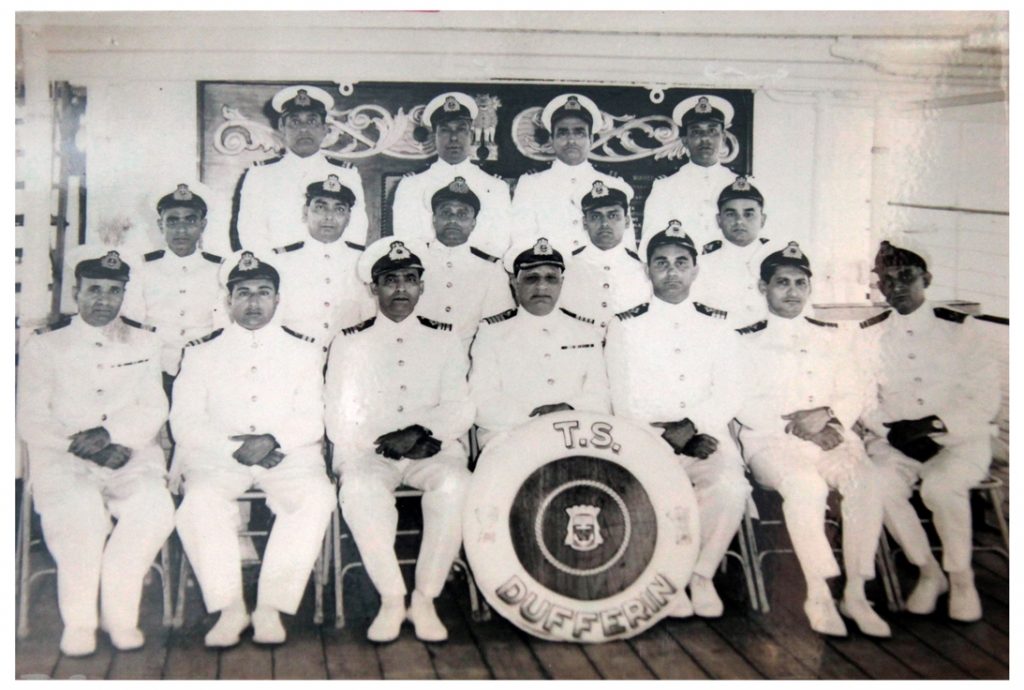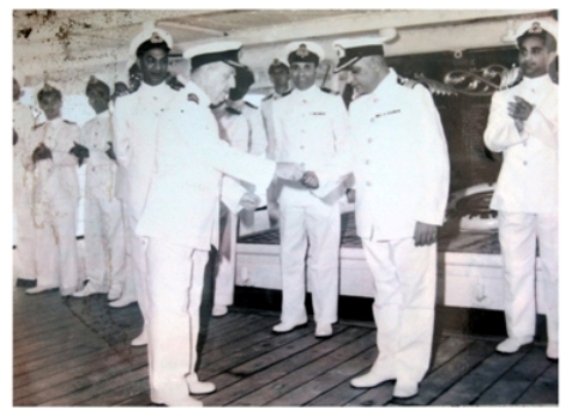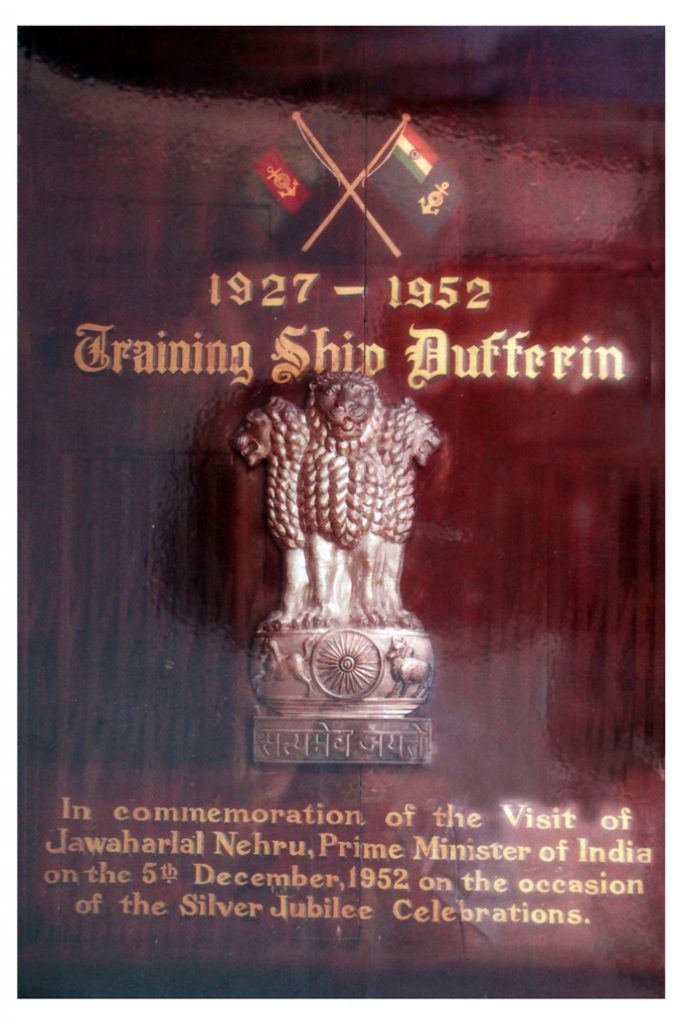The Indian Mercantile Marine Training Ship, I. M. M. T. S. Dufferin, as it was then known, was built in 1904 and served as a troopship for the Royal Indian Marine (R.I.M.) until 1925. She was named after “The Marquess of Dufferin, Viceroy and Governor General of India, 1884-88.” According to a report in the Silver Jubilee Number of the “Indian Cadet”, the Dufferin magazine, in 1952:

“Persuant to a resolution moved by Sir P. S. Sivasvani Iyer in the Indian Legislative Assembly the Government of India appointed a committee on 3rd February 1923 to consider the question of training Indian officers for the Merchant Navy. As a result of this committee’s recommendations it was decided to convert R.I.M.S. “Dufferin” into a training ship, and the Government of India agreed to her sale to the Department of Commerce for that purpose on 5th October 1927.
“The Training Ship actually came into being on 23rd November when seven cadets from up-country who had passed the examination and satisfied the Selection Board were allowed to join before the official opening to save them the necessity of residing ashore between 23rdNovember and the 1st December on which date the First Term of the First year of the First Training ship in India officially commenced.”
There were 30 young cadets hailing from all parts of India who formed the first batch 1927-30. Cadet No.1 was Ram Das Katari, who, as an Admiral, became the first Indian Commander-in-Chief of the Indian Navy.
How vividly I remember that first morning aboard the “Dufferin”. Having woken up at 6 a.m. with the bugler sounding ‘reveille’ and making up my bed, I made my way leisurely towards the Mess Room for coffee and biscuits, but before I got there, the bugler sounded the call to “Fall-in” on the Upper deck, so I had to go without my coffee. I kept saying to myself: “after ‘fall out for prayers’ will come the announcement, ‘those who have not had coffee proceed to the Mess Room’. Nothing doing. We got down to cleaning the ship, washing down, sweeping etc, followed by P. T. I learnt my first lesson. From that day onwards I made sure never to miss my morning coffee and biscuits. There were some cadets, as I learned from Don Dyer (1940-42 No. 471) who presently lives in Sydney, who got to the Mess Room early and managed to even scoop some butter from the platter.
A word on the organization of the ship and the life on board would be of interest. Discipline, dignity of human labour, physical training, love of sports, and a healthy and harmonious social intercourse inspired and brightened the life on board the ship. The cadets were divided into two Watches, Port (left side of the ship) and Starboard (the right side), each Watch was divided into three Tops (like ‘Houses’ in public schools) viz: Port Fore, Port Main and Port Mizzen.
Starboard Fore, Starboard Main and Starboard Mizzen. These were taken from the names of masts on sailing ships. The cadets were spread equally among the six Tops irrespective of religion or part of the country from which they hailed. A Top was allotted a part of the ship and was responsible for its cleanliness and general maintenance. The cadets in each Top, worked, played and messed together and entered for all competitions as a Top, whether it be for games, sailing or Boxing, maintenance of the part of the ship allotted to it, and as such a sense of esprit de corps was cultivated. With a few exceptions, all Trophies in the ship were awarded to a Top rather than to an individual cadet.
In charge of each Top (six of them) was a Senior Cadet Captain (like prefects in public schools) assisted by a Cadet Captain and a Leading Cadet. Every fortnight one of the Senior Cadet Captains took over the duties of Chief Cadet Captain, when the seventh S.C.C. known as the Captain’s Coxwain (pronounced Cox’n) took over charge of his Top.
All senior cadets who showed aptitude for leadership were given an opportunity to be appointed Senior Cadet Captains and Cadet Captains which helped to cultivate a sense of leadership. Cadets in the third and final year were known as ‘Nauticals’, second-year cadets as ‘Removes’ and the new comers as ‘Juniors’, for whom the first year was very tough, indeed. For most of them it was quite difficult to get used to strict military discipline, doing everything on the double and the physical labour of scrubbing the deck and performing various duties.
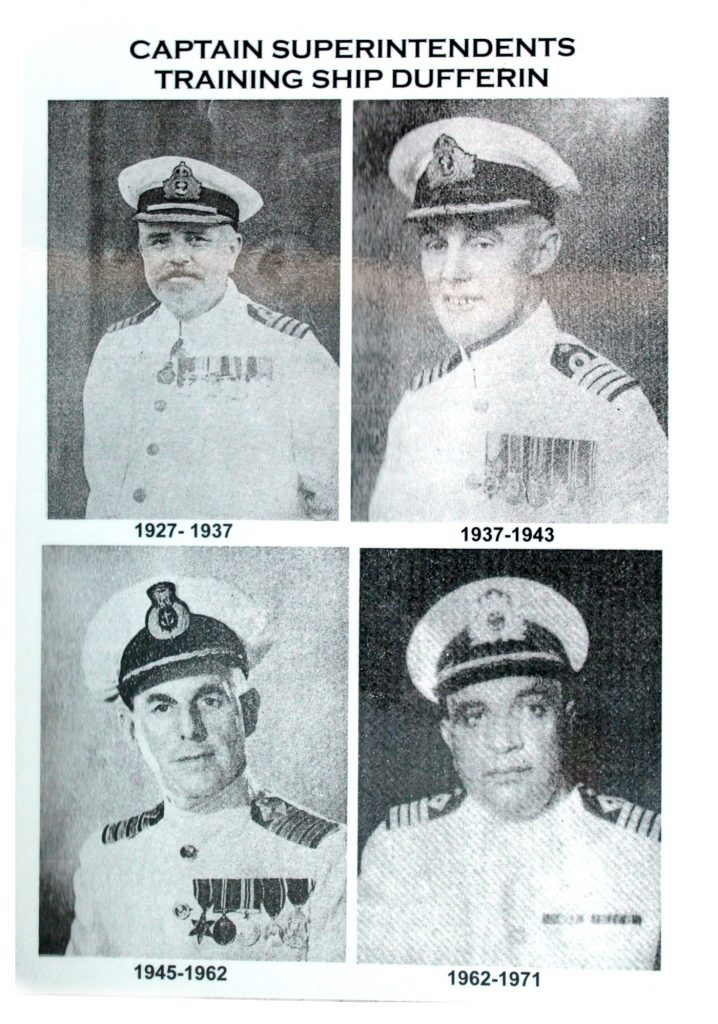 Soon after waking up and making up his bed, it was not unusual for a Nautical to tell him to make his bed also. At other times to clean shoes, shine brass buttons or wash cap-covers of senior cadets. He could also be punished by a Remove or a Nautical for various offences, however minor, like, for example, a button on the shirt not in its place. This was normally done by those who wished to throw their weights around and bully the Juniors. Even a ‘Remove’ could be punished by a ‘Nautical’. The punishment mainly was “Capstan Bar Drill” when a cadet was made to carry a wooden capstan bar weighing 7 lbs and run on the spot for several minutes according to the wish of the senior concerned. Senior Cadet Captains were authorized to cane a culprit with a rope wasp.
Soon after waking up and making up his bed, it was not unusual for a Nautical to tell him to make his bed also. At other times to clean shoes, shine brass buttons or wash cap-covers of senior cadets. He could also be punished by a Remove or a Nautical for various offences, however minor, like, for example, a button on the shirt not in its place. This was normally done by those who wished to throw their weights around and bully the Juniors. Even a ‘Remove’ could be punished by a ‘Nautical’. The punishment mainly was “Capstan Bar Drill” when a cadet was made to carry a wooden capstan bar weighing 7 lbs and run on the spot for several minutes according to the wish of the senior concerned. Senior Cadet Captains were authorized to cane a culprit with a rope wasp.
All minor cases of breaches of discipline were reported to a Court of Honour consisting of three Senior Cadet Captains with a junior cadet as Secretary. The cases were carefully investigated and a verdict arrived at, and if found guilty, a suitable punishment was given. In the year 1941 a cadet who was found guilty of stealing from a fellow cadet was expelled from the ship by the Captain Superintendent on the recommendation of the Court of Honour.
The first Captain Superintendent of the Training Ship was Captain H. A. B. Digby-Beste, C.I.E., O.B.E., R.I.N., J.P., who had joined the ship on 1st November 1927, and, on retirement, handed over charge to Commander (later Captain) R.C.G. McClement R.I.N. J.P. on 16th December 1937. He was assisted by three executive officers – Commander M.F.S.C. Harvey, Chief Officer, Mr. R.J. Sampson, Second Officer – and, during our time (1939-41), we had four different Third Officers – Messrs. E. Johm Jacob, P.N. Kapani (whom we called Pine ka pani), A. Chowdhury and P. Alexandra. All four of them were Ex-Dufferin cadets. Mr. J.S.H. Stevenson (Sticky) was the Chief Engineer and Mr. Brown the Second Engineer.
The Scholastic Department was headed by Mr. H.I. Jones, the Headmaster, who taught English, joined the Dufferin in 1927 from St. Paul’s School, Darjeeling, and retired in June 1940. He was succeeded by Mr. U. Kramet, who came from Lahore, and was there when our batch passed out in December 1941. He was later appointed Vice Chancellor of the University of Punjab by the Government of Pakistan. Among the masters, the senior most was Mr. R.D. Sathe, who joined in 1927 and taught Mathematics and Trignometry, followed by Mr. C. R. Pinto (Geography), Mr. Koppikar (Mechanics), Mr. Kallap (Science), and Mr. Baig (Grammar). These are the names I remember. I forget who taught history and any other subject. We also had Mr. Lawrence and Mr. Packiam.
The Dufferin passing out certificate was equivalent to matriculation so that any cadet, not proceeding to sea, could join a college. In addition to the school subjects, the executive officers taught us Seamanship, Navigation, Chart work, Astronomy, Meteorology, the use of ‘sextants’ to determine the position of a ship on the open seas, signaling (Morse code, Semaphore and International code) and Elementary Engineering. The Engineering cadets had a more detailed instructions in all aspects of engineering. In addition, we were taught Boat-handling, and those who passed the test were appointed Cox’n of the ship’s Motor Boat. Similarly, cadets who qualified were given duties for driving the engine in the Motor Boat. Mr. D. H. Gallaher was the games master and Dr. Wilkinson, the ship’s doctor, who attended to cadets in the ship’s hospital, known as the Sick Bay.
We had a very busy schedule from 6 a.m. when the entire Ship’s company ‘fell in’ on the Quarter Deck, wearing ‘Boiler suits’, each Top having its own place. The first order used to be “Fall out for prayers” when cadets formed groups according to the religion they followed and prayed for five minutes. This was followed by “Clean Ship” when each Top went about sweeping, cleaning etc., of the part of the ship allotted to them. We then changed into shirts, shorts and canvas shoes for P.T. after which we bathed and changed into our ‘Day’ uniform – Blue shirts with lanyard, and shorts, black stockings, black shoes and caps (which had to be removed in the Mess Room and classes) – had breakfast at 9 a.m. then two periods of school work.
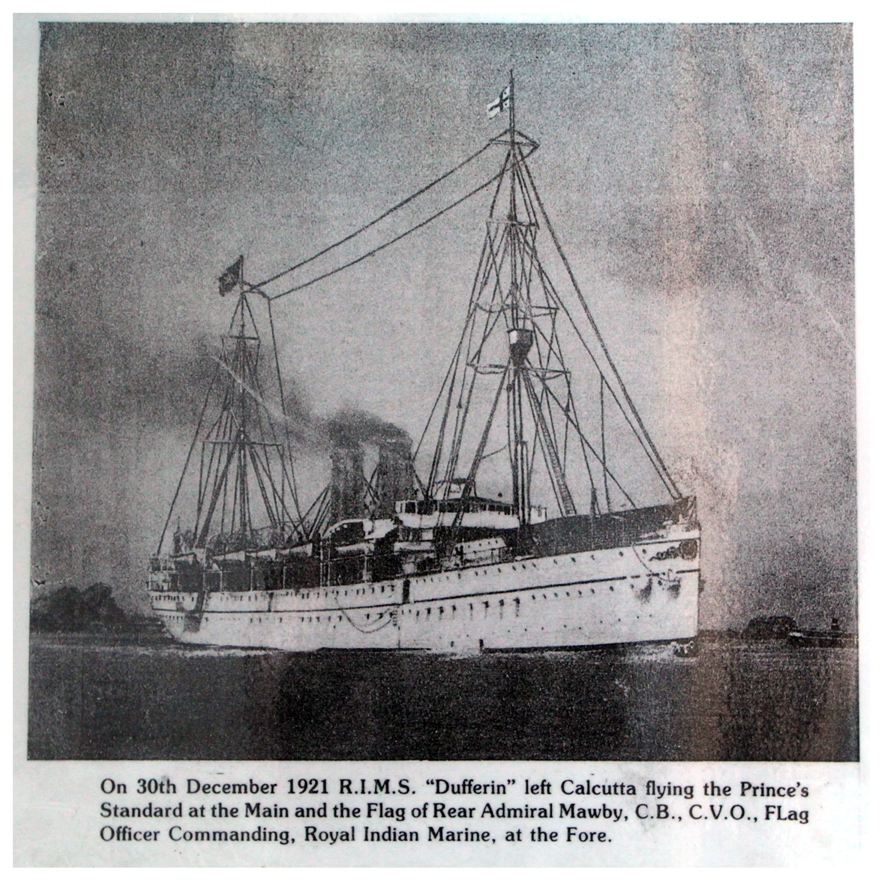
At eleven o’clock we had a break for half an hour followed by two more periods, then lunch at 1 p.m. We had two more periods of school or vocational classes, Tea and then cadets of one watch went to our playing fields at Hay Bunder for games. On Mondays and Wednesdays it was the Starboard Watch and on Tuesdays and Thursdays, the Port Watch. Some of the cadets of the ‘Watch’ remaining on board were allotted duties as Quarter Master, Messenger, Signaler and watch keeper on the Bridge etc., while others had boxing lessons supervised by a Sergeant Major from a British Regiment stationed in Bombay or play ‘Deck-hockey’. On alternative Fridays a Watch went to the “Backbay Baths Swimming pool” for swimming, and the watch remaining on board did “make and mends”, while some went sailing in one of the ship’s boats.
In the evening – 6 p.m. onwards – our uniform used to be, white shirt with a black tie, blue shorts and black stockings, and we had free-time after dinner until 9 p.m. when the lights went out. Muslim cadets were permitted to change into their sleeping suits at 8.30 p.m. and go to the Foc’sle Head (front deck of the ship) to perform their prayers.
On Saturdays the whole morning was spent in cleaning the ship. Starting with scrubbing the upper deck with a six inch brick from one end to the other and back. This operation was termed “Holi-stoning”. The entire deck was then washed down and dried. Shining all brass work using ‘elbow grease’ and all paint work cleaned. Since we were dressed in our boiler suits, breakfast – sandwiches, banana and tea – was served on the deck during a break. I do not remember when the task of cleaning ship ended, but, after bath and changing into our Day uniform we had lunch around 1 p.m. After that we got busy shining our buttons, washing our cap covers, polishing our shoes – for juniors there were a few additional shoes to polish – for the Sunday Division.
The ship’s Hockey or Football team, according to the season, played a match, at home, against a school or a club team in our playing fields at Hay Bunder, or ‘away’, when we travelled in our launch “Dorothy”, landed at the Gate of India, and marched down to the ground of the home team. In my first year, as a Junior cadet, I was selected to play for the Hockey team, and in my final year, I was the Vice-Captain while Cadet W.F.C. Jones was the Captain
After dinner we had free time. The Canteen was opened by the Remove cadet in charge of it when the cadets got an opportunity to spend from the ‘Rupee one’ per week pocket money that they got. In my second year, as a Remove cadet, I was given charge of the Canteen.
On Sundays we changed into our No.1 uniform – White shirt, trousers, socks and shoes, black tie and white jacket. In winter, we wore a blue refer. After ‘falling in’ the Captain Superintendent inspected us, as well as all parts of the ship. Points were given to Tops for cleanliness and maintenance of the part of the ship allotted to them. This was followed by the ‘March Past’ led by the Chief Cadet Captain marching behind the ship’s band. The rest of the day we were free to do as we liked. Write letters, read books etc. One Sunday in the month we had shore leave from 9 a.m. to 5 p.m., and one Sunday in the month was visitor’s Day.
The year was divided into two terms. First, January to about 3rd June known as the Spring Term, followed by summer holidays till the end of August. Then the Autumn term from the beginning of September till about the 10th of December, when we had one month of winter holidays. During the spring term we had ten days of Easter holidays when the entire ship’s company camped at the Juhu beach which was great fun – sea bathing three times a day, playing games on the beach etc. and camp fire at night. Cadets living in Bombay were allowed to go home. In the autumn term the big event used to be C.B. Sethna Boxing Championship which was compulsory for every cadet to enter, except those in the Sick Bay. The Juniors used to look forward to be paired against Seniors who were great bullies, and take the opportunity to give them a good bashing.
